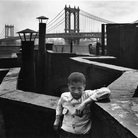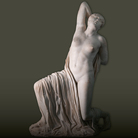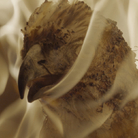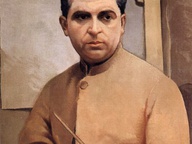I ritratti di Daniele Barbaro di Tiziano e Veronese

Tiziano Vecellio, Ritratto di Daniele Barbaro, 1545 c., Madrid, Museo del Prado
Dal 19 September 2015 al 15 November 2015
Venezia
Luogo: Palazzo Cini
Indirizzo: Campo San Vio, Dorsoduro 864
Orari: 11-19; chiuso martedì
Enti promotori:
- Regione Veneto
Telefono per informazioni: +39 041 2710217
E-Mail info: palazzocini@cini.it
Sito ufficiale: http://www.cini.it
In occasione del cinquecentenario della nascita di Daniele Barbaro (1514-1570), la Galleria di Palazzo Cini ospiterà, al secondo piano del museo, due capolavori della ritrattistica rinascimentale realizzati da Tiziano e Veronese, entrambi recanti l’effigie del celebre patrizio.
L’evento si colloca al centro del programma di iniziative culturali dedicate alla figura dell’umanista veneziano, promosse dalla Regione del Veneto e dalla Fondazione Giorgio Cini attraverso il “Comitato Regionale per le Celebrazioni” appositamente istituito.
Mecenate raffinatissimo, animatore del dibattito intellettuale nei circoli culturali della Serenissima, in dialogo con Benedetto Lampridio, Domenico Morosini, Giovanni della Casa, Bernardo Navagero, Benedetto
Varchi, Sperone Speroni, Pietro Bembo; committente di alcuni dei più importanti artisti del secolo, come Palladio e Veronese, entrambi impiegati in quello che resta il suo lascito più noto e il suo testamento spirituale, la villa di famiglia a Maser; prolifi co trattatista versato in ogni campo del sapere, dalla matematica all’ottica, dalla retorica alla teologia, dalle scienze dalle scienze alla filosofia a, Daniele Barbaro è noto soprattutto per la traduzione commentata del De Architectura di Vitruvio, edita a Venezia dal Marcolini nel 1556: opera che vanta il contributo di Andrea Palladio, compagno di Barbaro in un viaggio di studio
a Roma nel 1554.
Il ritratto di Tiziano, conservato nel Museo del Prado di Madrid, lo coglie di tre quarti, sulla trentina, con lo sguardo introspettivo dello studioso; si colloca dunque negli anni di Padova (1545 ca.), dove Barbaro si addottorò e fu tra i soci fondatori dell’Accademia degli Infiammati. Nel contempo ricevette il primo incarico dalla Serenissima, divenendo sovrintendente alla costruzione dell’Orto Botanico.
Il ritratto di Veronese, pervenuto dal Rijksmuseum di Amsterdam, lo raffigura in età più avanzata (1560-61), ammantato della veste ecclesiastica con mozzetta violacea e tricorno vescovile, insegne talari che rimandano alla dignità patriarcale (nel 1550 divenne patriarca di Aquileia). Seduto su uno scranno, il prelato è colto in un attimo di sospensione meditativa, innanzi a due volumi della sua opera su Vitruvio: una delle più affascinanti testimonianze del colto umanesimo cristiano nella Venezia del Cinquecento.
L’evento si colloca al centro del programma di iniziative culturali dedicate alla figura dell’umanista veneziano, promosse dalla Regione del Veneto e dalla Fondazione Giorgio Cini attraverso il “Comitato Regionale per le Celebrazioni” appositamente istituito.
Mecenate raffinatissimo, animatore del dibattito intellettuale nei circoli culturali della Serenissima, in dialogo con Benedetto Lampridio, Domenico Morosini, Giovanni della Casa, Bernardo Navagero, Benedetto
Varchi, Sperone Speroni, Pietro Bembo; committente di alcuni dei più importanti artisti del secolo, come Palladio e Veronese, entrambi impiegati in quello che resta il suo lascito più noto e il suo testamento spirituale, la villa di famiglia a Maser; prolifi co trattatista versato in ogni campo del sapere, dalla matematica all’ottica, dalla retorica alla teologia, dalle scienze dalle scienze alla filosofia a, Daniele Barbaro è noto soprattutto per la traduzione commentata del De Architectura di Vitruvio, edita a Venezia dal Marcolini nel 1556: opera che vanta il contributo di Andrea Palladio, compagno di Barbaro in un viaggio di studio
a Roma nel 1554.
Il ritratto di Tiziano, conservato nel Museo del Prado di Madrid, lo coglie di tre quarti, sulla trentina, con lo sguardo introspettivo dello studioso; si colloca dunque negli anni di Padova (1545 ca.), dove Barbaro si addottorò e fu tra i soci fondatori dell’Accademia degli Infiammati. Nel contempo ricevette il primo incarico dalla Serenissima, divenendo sovrintendente alla costruzione dell’Orto Botanico.
Il ritratto di Veronese, pervenuto dal Rijksmuseum di Amsterdam, lo raffigura in età più avanzata (1560-61), ammantato della veste ecclesiastica con mozzetta violacea e tricorno vescovile, insegne talari che rimandano alla dignità patriarcale (nel 1550 divenne patriarca di Aquileia). Seduto su uno scranno, il prelato è colto in un attimo di sospensione meditativa, innanzi a due volumi della sua opera su Vitruvio: una delle più affascinanti testimonianze del colto umanesimo cristiano nella Venezia del Cinquecento.
SCARICA IL COMUNICATO IN PDF
COMMENTI

-
 Dal 2 December 2025 al 19 February 2026
Milano | Centro Culturale di Milano
Dal 2 December 2025 al 19 February 2026
Milano | Centro Culturale di Milano
Walter Rosenblum. Il mondo e la tenerezza
-
 Dal 30 November 2025 al 12 April 2026
Gallarate | Museo MA*GA
Dal 30 November 2025 al 12 April 2026
Gallarate | Museo MA*GA
Kandinsky e l’Italia
-
 Dal 29 November 2025 al 12 April 2026
Roma | Musei Capitolini
Dal 29 November 2025 al 12 April 2026
Roma | Musei Capitolini
La Grecia a Roma
-
 Dal 22 November 2025 al 3 May 2026
Torino | Sale Chiablese dei Musei Reali
Dal 22 November 2025 al 3 May 2026
Torino | Sale Chiablese dei Musei Reali
Orazio Gentileschi. Un pittore in viaggio
-
 Dal 20 November 2025 al 25 January 2026
Firenze | Palazzo Strozzi
Dal 20 November 2025 al 25 January 2026
Firenze | Palazzo Strozzi
Andro Eradze. Bones of Tomorrow
-
 Dal 21 November 2025 al 28 March 2026
Cuneo | Complesso Monumentale di San Francesco
Dal 21 November 2025 al 28 March 2026
Cuneo | Complesso Monumentale di San Francesco
La Galleria Borghese. Da Raffaello a Bernini. Storia di una collezione


